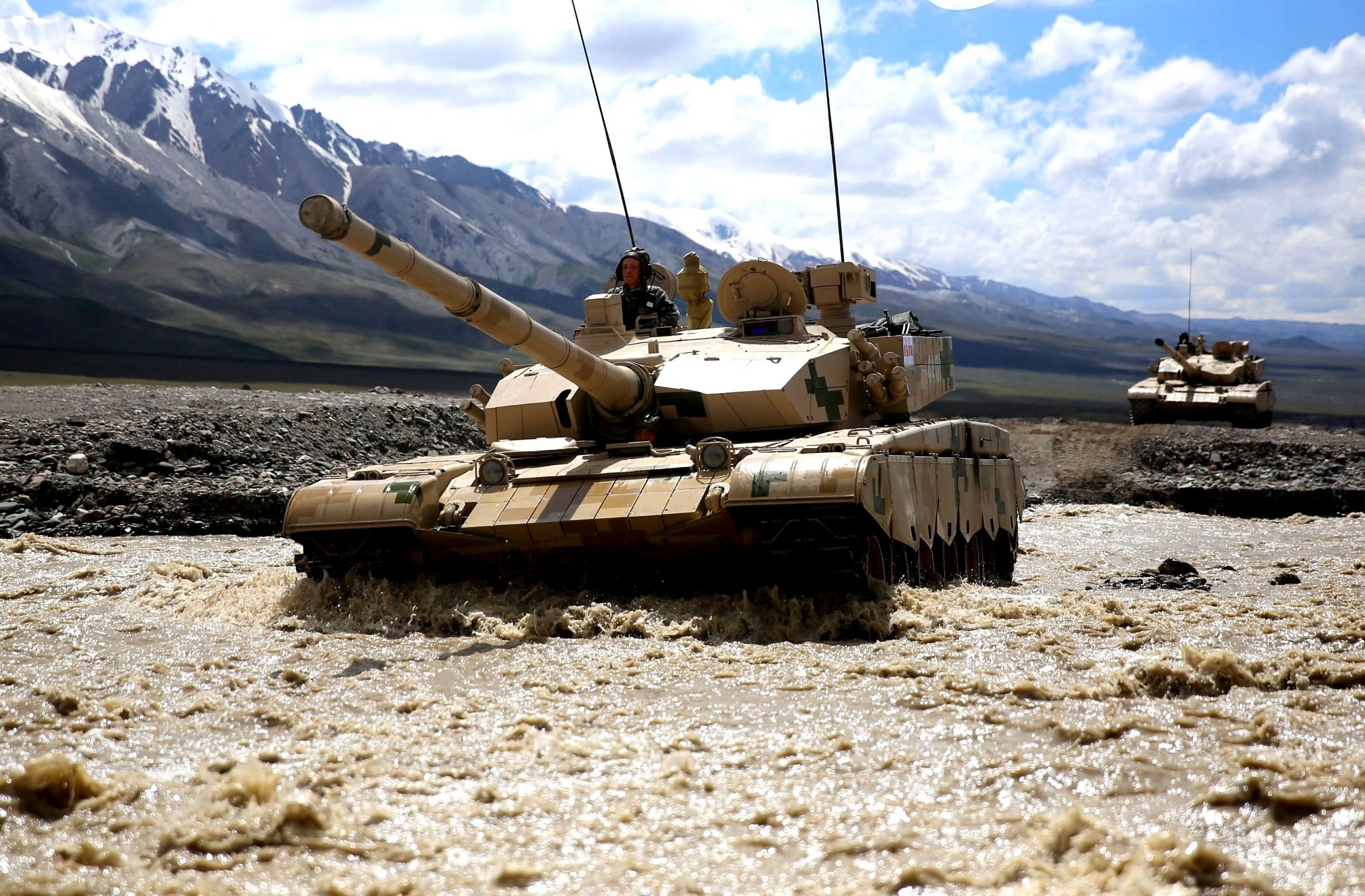News Brief
Ladakh: China Quietly Reinforces Positions In Depth Areas To Support Its Troops Deployed At Standoff Points, Says Report
- China has reinforced its winter deployment positions with permanent structures, accommodations and military buildings.

Chinese tanks at high altitude. (China Military/<a href="http://eng.chinamil.com.cn/">eng.chinamil.com.cn</a>)
As India battles the second wave of Covid-19, China has been quietly reinforcing its presence in depth areas along the Line of Actual Control (LAC) to support its troops deployed at friction points, a report in India Today says.
This development suggests that the People’s Liberation Army (PLA) does not plan to go back from friction points such as Gogra and Hot Springs anytime soon, a message that the Indian side came back with from the 11th round of talks with the Chinese on disengagement and de-escalation in eastern Ladakh.
The report says China has built permanent structures between Kangxiwar, which is located on the Xinjiang-Tibet (G219) highway just north of Aksai Chin, and Rudok, a town in Tibet just south of the eastern end of Pangong Lake.
In this area, China has reinforced its winter deployment positions with permanent structures, accommodations and military buildings.
Positions have been reinforced in Xaidulla, a town located on the G219 highway 94 kilometres from Karakoram Pass, and Kyrmmgo Traggar, across the LAC from Hot Springs and Gogra. A radar site in Piue, located just across from Ladakh's Chip Chap Valley, has also been strengthened by the Chinese.
At Kangxiwar and Rudok, the PLA has brought in 10,000 additional temporary troops to support the 10,000 permanent Chinese troops deployed at these locations, the report says, citing an intelligence estimate.
China has also strengthened its positions in the depth areas near the Spanggur Lake, which is located east of Chushul and south of Pangong Tso. The Kailash Range, on which Indian troops had occupied tactically advantageous positions in August last year, is located just west of the Spanggur Lake.
The Kailash Range heights occupied by Indian troops had to be vacated during the disengagement on the north and south banks of the Pangong Lake.
Interestingly, the India Today report says the Indian Army could still be holding “similarly advantageous positions in other sectors”.
On the north bank of Pangong Tso, China remains east of Finger 8, but appears to have reinforced its bases in the rear with troops and equipment from the PLA’s 4th, 6th and 11th Motorised Divisions still present.
Earlier, StratNews Global had reported that China has started rotating troops along the LAC. The PLA has rotated two large field formations by inducting two fresh divisions earlier this month, the report says.
All of these developments have taken place within view of the Indian military and intelligence agencies, reports say. The Indian Army continues to maintain its posture on the friction sites in eastern Ladakh and a large number of troops remain in depth areas on the Indian side to deter Chinese misadventures.
On 27 April, Indian Army Chief General Manoj Mukund Naravane visited eastern Ladakh was in eastern Ladakh to review operational preparedness.
Introducing ElectionsHQ + 50 Ground Reports Project
The 2024 elections might seem easy to guess, but there are some important questions that shouldn't be missed.
Do freebies still sway voters? Do people prioritise infrastructure when voting? How will Punjab vote?
The answers to these questions provide great insights into where we, as a country, are headed in the years to come.
Swarajya is starting a project with an aim to do 50 solid ground stories and a smart commentary service on WhatsApp, a one-of-a-kind. We'd love your support during this election season.
Click below to contribute.
Latest